Recently, there has been and continues to be a lot of uproar about ASUS motherboards maintaining excessively high SoC voltages, which appear to be the problem with the Ryzen 7000X3D failures. However, as will be seen today, other brands also maintained excessively high SoC voltages, applying only a minimal drop through the new firmware versions, gallantly ignoring AMD’s guidelines. However, a deeper analysis of the problem is not done in this article, because that would be a mere repetition. However, one can check out such articles at Tom’s Hardware US, among others, to learn more about it.
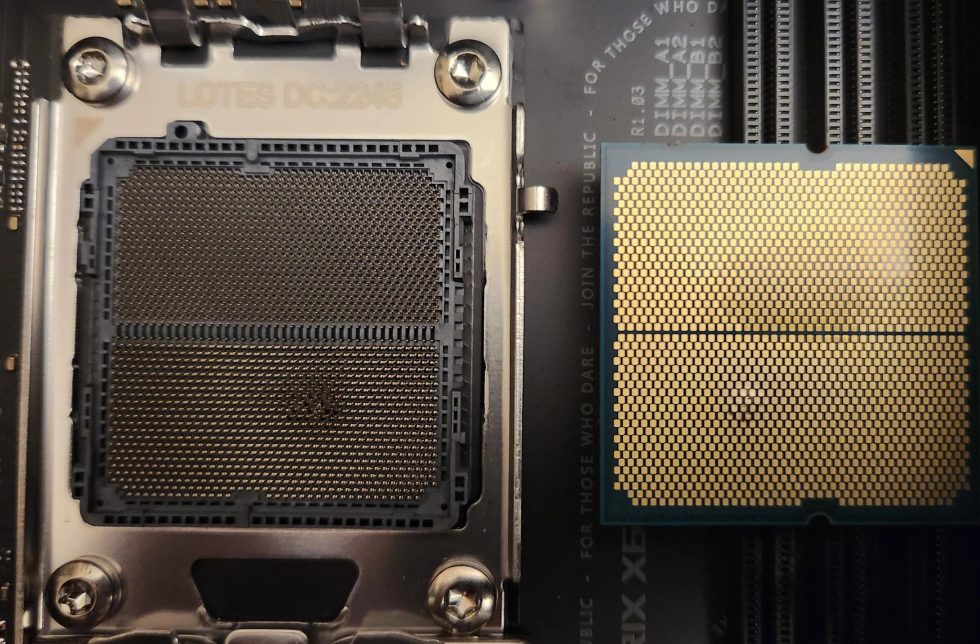
Assuming you don’t have time to read these articles, I’ll summarize it again briefly: So the high VCORE_SOC voltage seems to be the culprit behind several CPU and consequently motherboard failures, which is why AMD has released new firmware to reduce SoC voltages to 1.3V, which is safer. So according to AMD, the maximum safe limit for SoC voltage is 1.3V. This is exactly what was reported in detail here on igor’sLAB, but unfortunately it turns out to be more complex.
The latest statement from AMD
Important Limitation with a big question mark
Of course, the voltage measured at the socket pin is still not quite what is actually present internally in the CPU at the end, because there are other losses (voltage drops). Unfortunately, AMD makes a bigger secret of this. However, one has to remain fair and could definitely subtract 0.05V, so it will be exciting to see if and how the motherboard manufacturers will comment on this. This would not explain why there are boards whose SOC voltage at the socket is much closer to the maximum 1.3 volts, but the presumption of innocence should also apply as long as no further details are published here. Because SVI3 is a thing of its own. There is 1.37 V at the VRM, 1.35 V at the socket and the SVI3 output returns only 1.28 V via a hardware register. The motherboard manufacturers and AMD are simply called upon to be more transparent.
We simply retest and verify the statements
According to the latest findings from Gamers Nexus, ASUS did release a new BIOS that is supposed to allow a maximum SoC voltage of 1.3V, but this does not seem to be the case. Therefore, I decided to test the Gigabyte Aorus Master X670E motherboard and share the results with you. There is also another ASUS motherboard here, but since this one is installed in a test system and long-term tests are running, there is currently no possibility to experiment with it. But other products can be really interesting, as we will see in a moment.
The following components were used for the tests:
- Mainboard: Gigabyte Aorus Master X670E
- CPU: AMD Ryzen 9 7950X3D
- RAM: XPG CASTER RGB DDR5 DDR6400 (2 x 16GB, clocked @ 6000MHz)
- NVMe: XPG GAMMIX S50 Lite 1TB
- PSU: Super Flower Leadex VII Gold 850W
- Cooler: NH-D15S chromax.black
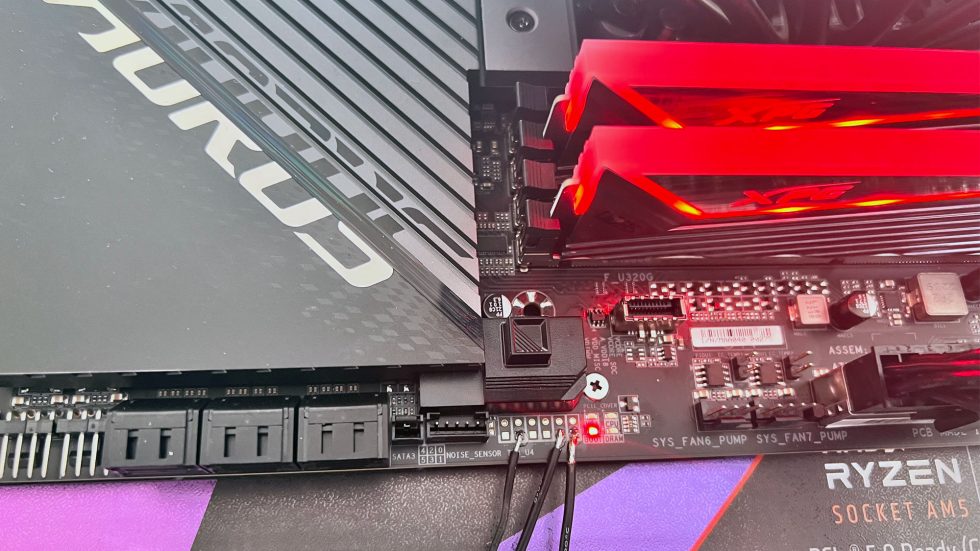
A total of three wires were soldered to the motherboard and connected to a LabJack U3-HV to simultaneously monitor the following voltages:
- VCORE
- VCORE_SOC
- VDIMM
- With an older BIOS (F7) & EXPO disabled
- With an older BIOS (F7) & EXPO enabled
- With the newest BIOS (F10d) & EXPO enabled
Gigabyte states that the newest BIOS limits the SoC voltage to a maximum of 1.3V.
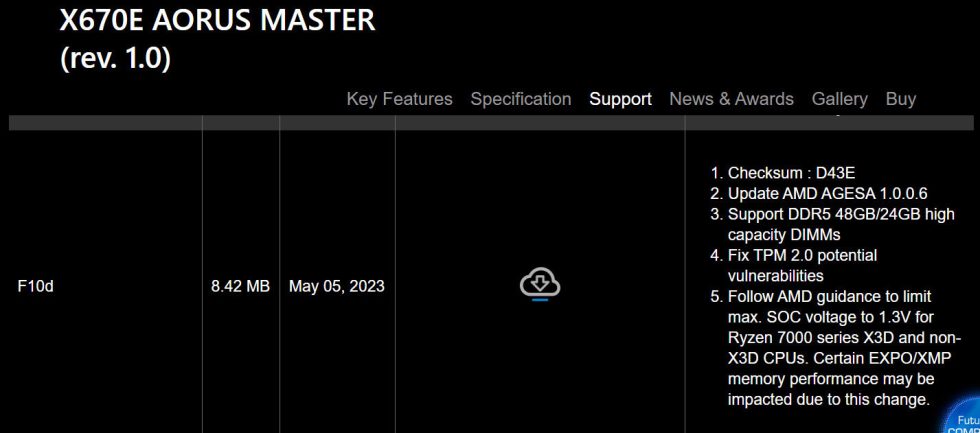
Yes, you can write a lot when the day is long…. But how does it look in practice? Again, you just have to measure and be amazed. The measurements are 100% reproducible and everyone is free to follow this for themselves
F7 BIOS without EXPO
With the old BIOS and without EXPO enabled, Vcore_SOC and VDIMM are at low voltage levels. These readings were taken while the system was idle.
F7 BIOS with EXPO
As soon as EXPO is enabled, Vcore_SOC shoots up and reaches 1.42V. These readings were taken while the system was running Prime95.
F10d BIOS with EXPO
With the new BIOS claimed to limit Vcore_SOC to 1.3V, a screenshot shows that this is not the case. The difference is 0.056V, with Vcore_SOC exceeding 1.36V! Therefore, it remains unclear where the correction promised by GBT in the F10d changelog can be found. Therefore, ASUS is not the only manufacturer that “tricks” with the Vcore_SOC voltage.
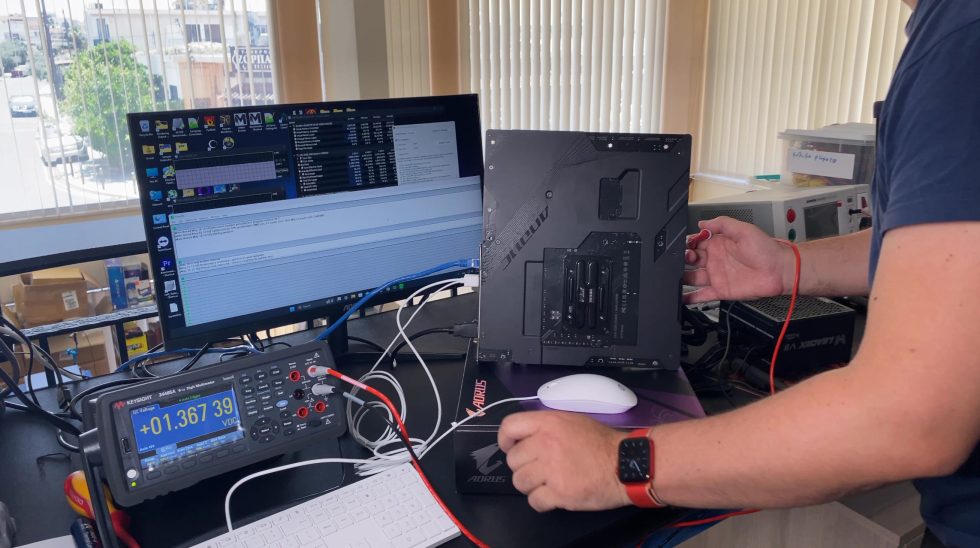
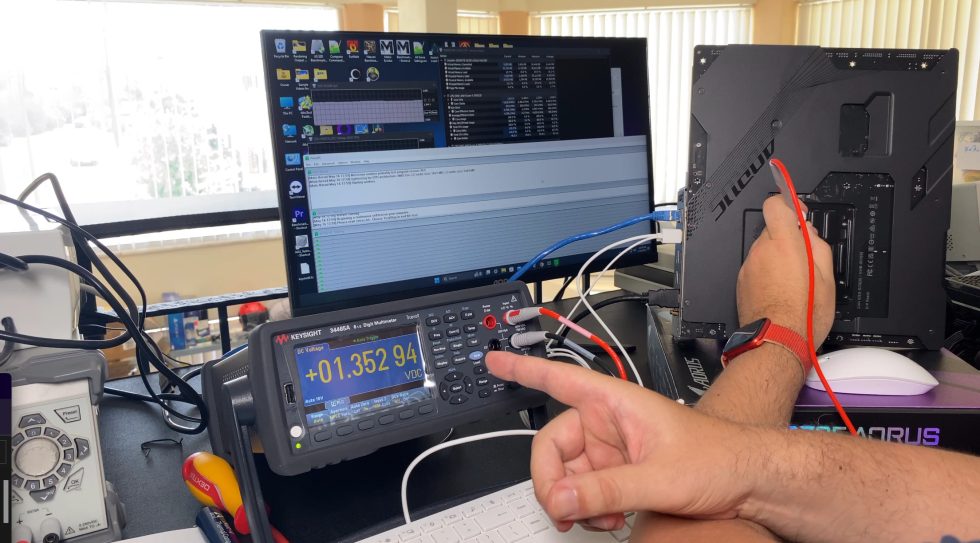
Summary and conclusion
We see that besides Asus, Gigabte also ignores AMD’s proposed solution and applies higher SOC voltages by creating these voltages on the motherboard VRMs different from the visible BIOS settings. And I’m very sure that if more motherboards are tested, more will be found where Vcore_SOC exceeds 1.35V, guaranteed. However, all this is not nice. The customers are lulled into security and simply ignore AMD’s specifications. However, I also refer to the imponderables described at the beginning, so that this could perhaps put all the measurements by Gamersnexus, Jayz and this one into perspective. So please a little more transparency from AMD and the manufacturers of the motherboards!
My thanks go to the guest author, whose findings I am of course happy to share. If you want to know more about Aris, hwbusters (this article was also first published here) and Cybenetics i would like to recommend the respective homepages. You will find unique content based on real and independent measurements. And I recommend the new Powenetics V2 PMD:













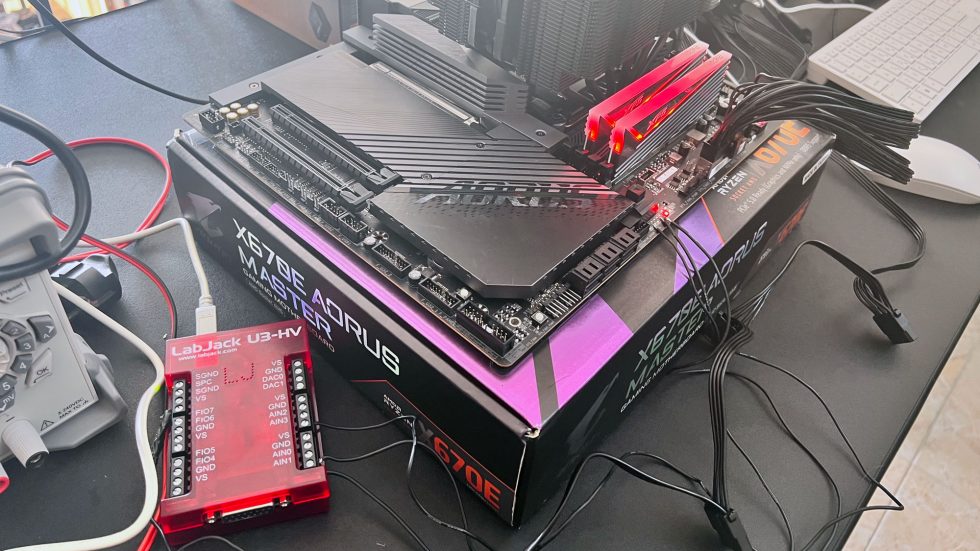























82 Antworten
Kommentar
Lade neue Kommentare
Veteran
Urgestein
Veteran
Urgestein
Urgestein
Urgestein
Veteran
Urgestein
Urgestein
Mitglied
Urgestein
Mitglied
Mitglied
Urgestein
Mitglied
Mitglied
Veteran
1
Mitglied
Alle Kommentare lesen unter igor´sLAB Community →